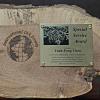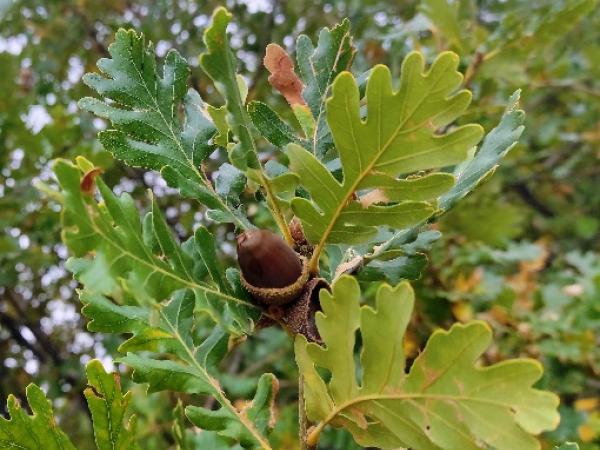Editor's Picks
Plant Focus
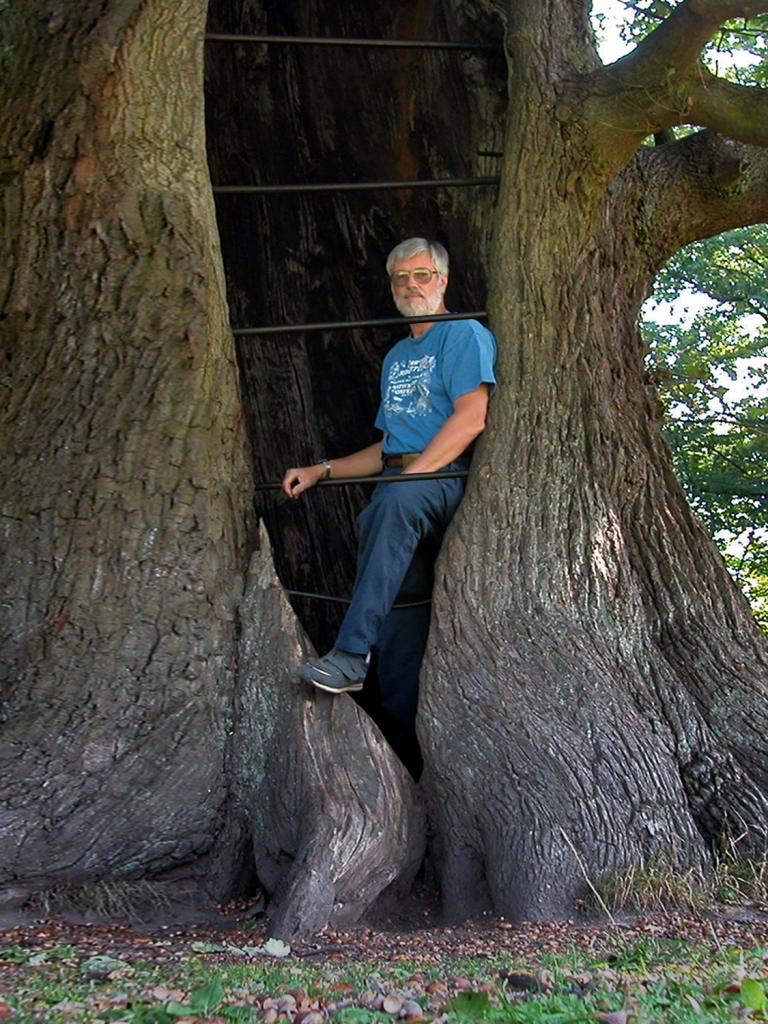 |
| Guy Sternberg in a 300-year-old Quercus robur in Jenisch Park, Germany |
Where are you from?
I was born in Blue Island, Illinois and have always lived in Indiana and Illinois. My travels, largely done during the past 25 years as part of my IOS involvement, have taken me to most US states and about 20 countries, and many of our oaks have come via those trips to far-away places and from the generous friends I have made there.
What is your professional background?
I began college (Purdue) in engineering, due to a misguided prod from a high school counselor who suggested my aptitudes lie there and that engineers make big money. I quickly learned that the only big thing about it was that it was a big mistake! I had always loved the outdoors, and especially trees, and had planted my first tree seeds in my childhood sandbox in 1952. So I quickly reversed course and moved over to major in horticulture and the new program of landscape architecture. Never let someone else try to tell you how to live your life.
I graduated and became a landscape architect (state park designer) and de facto tree consultant for the Illinois Department of Conservation, eventually moving into an administrative role before retiring in 2001. But my side activities, including outdoor photography, writing my books, and working with my wife Edie beginning in 1976 to develop Starhill Forest Arboretum, always were my primary focus.
How did your interest in oaks start?
When my parents moved to a wooded area in Indiana in 1961, my antennae immediately tuned into the old growth oaks there – Quercus rubra, Q. alba, Q. velutina, and Q. macrocarpa. I was fascinated by all woody plants, and still am, but oaks were so impressive and diverse that I could not get enough of them. Planting them, pruning them, seasonal studies, incipient untrained observations that would later be called ecology, and
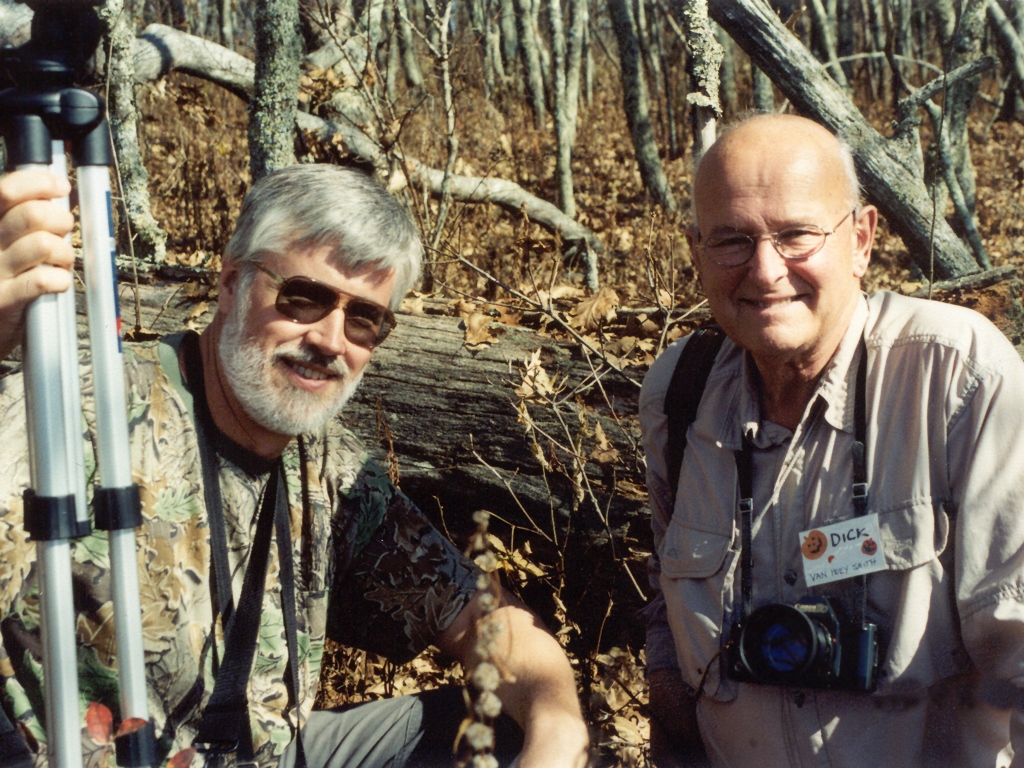 |
| Guy and Dick van Hoey Smith, October 2000 |
even cutting and splitting dead ones for firewood all helped to mold and reinforce my interest. I began to tinker with oak hybrids while in college, and the first one from that time (an F1 Q. ×saulii) is still here, 50 years later, where I transplanted it when we bought the land that became our arboretum. Since then we have added more than 700 oak accessions and I have worked to save and interpret historic and special oaks elsewhere at every opportunity.
How did you come to join IOS?
Steve Roesch had contacted a few of us via snail mail in the 1980s to ask if we would like to form a group to promote and participate in seed exchange. The handful of people he reached out to were those whom he had found while reading about people who already had some degree of notoriety for growing or studying oaks, so this was a great opportunity for me to correspond with such people. Nigel Wright, then a nurseryman in Pennsylvania, started a newsletter which eventually became the journal International Oaks, with later offshoots such as the newsletter Oak News & Notes and the website. I organized a conference for 1994, hoping for a few dozen people, and the response was overwhelming. We formed an incorporation committee then, and elected our first officers at the following conference, and within a few years we grew into an oak army of ~500 people with a presence in more than 30 countries. Steve is still with us as a member, but we have taken IOS light years beyond his (and my) initial dream.
Which are your favorite oaks?
Oh, get real! You tell me your favorite child and maybe (or maybe not) I’ll try to pick a favorite oak! If I really must answer that, I would say it’s whatever oak, dead or alive, that I’m standing next to at the moment.
An oak anecdote you would like to share?
My fondest memories have involved our conferences, and I have never missed one. Meeting so many enthusiastic, generous, and eminently knowledgeable people; seeing so many wonderful oak places that could only be found with a good local oak expert as a guide; the hilarious arguing and fussing among world-class experts about taxonomic quibbles during oak tours; learning so very much from everyone involved; picking acorns for the shortest people on our tours who could not reach them and experiencing their gratitude; and smiling uncontrollably as the ever-jovial Dan the Oakman videoed every conference and trip he attended.
I began our award program after the California conference in 1997 and I was thrilled to be in a position to be able to present some of our first awards to Dick van Hoey Smith, Stelian Radu, and Ron Lance. I was also grateful (and uncharacteristically speechless!) to have been surprised in Winchester by receiving one myself.
Then there was spending several exciting but grueling years as the journal editor, trying to pry information from authors whose priorities were more in line with doing their work than reporting it. I assisted many of them with English translation, graphics, and the other things that turned their knowledge into a journal contribution. I also enjoyed trying to help the later presidents and conference organizers who succeeded my term; seeing some
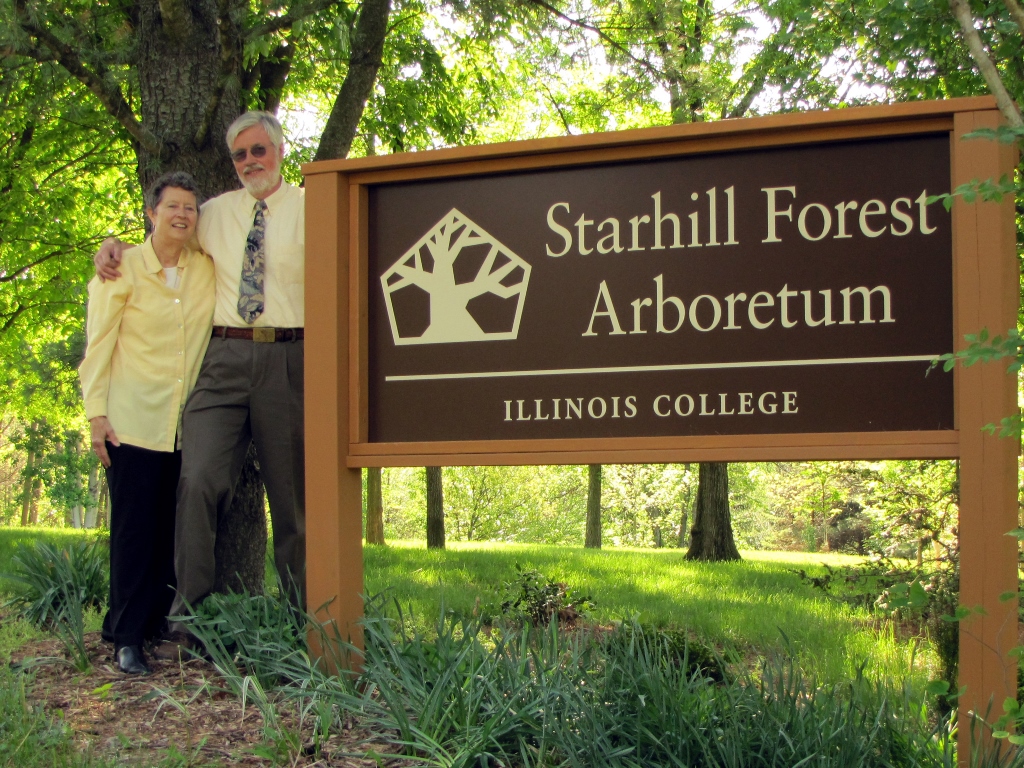 |
| Guy and Edie Sternberg at the entrance of Starhill Forest Arboretum |
highly talented directors with boundless energy join the board and pull us forward beyond my capability to do so; and generally becoming recharged every time I encountered any of those wonderful people.
Maybe the top highlights for me, which are not IOS but could not have happened without IOS, were the development of several oak cultivars and having Starhill Forest become recognized as the most comprehensive APGA-certified oak collection in North America, via the Plant Collections Network, and then the very first arboretum to achieve national ArbNet certification, at level III. Nothing changed internally from these recognitions, but it suddenly placed us on the map and gave us credibility with those who were not already familiar with what Edie and I (and later our curator Alana) had done and continue to do.
Anything else you would like to add?
We all probably have heard or read my late friend Dick van Hoey Smith’s statement that oaks typically grow for a century, live for another century, and then die for another century. Occasionally, depending upon the audience, he would add a century or two, but the concept remained that premise of dividing a tree’s life into those stages. I miss Dick and many other early pioneers of IOS so very much, and I am now entering that third stage myself. As I look back, and then try to look forward, I am satisfied and optimistic about everything and everyone that is IOS.


